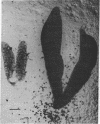Abstract
Lambornella clarki (Ciliophora: Tetrahymenidae), an endoparasite of Aedes sierrensis (Diptera: Culicidae), is dispersed by infected adult mosquitoes. Invasion of the ovaries induces parasitically castrated females to exhibit oviposition behavior and thereby actively disperse ciliates through deposition into water. Oviposition behavior of infected females is prolonged and mimics that of normal gravid females in their first gonotropic cycle. Adults of both sexes also passively disperse ciliates by dying on water surfaces, and infected adults are more likely to die on water than uninfected adults. Ciliates dispersed by infected adults can infect larvae and form desiccation-resistant cysts. Parasite-induced dispersal by hosts, desiccation-resistant cysts, an active host-seeking infective stage, and high infection and mortality rates all indicate significant biological control potential for these and related ciliates against container-breeding mosquitoes.
Full text
PDF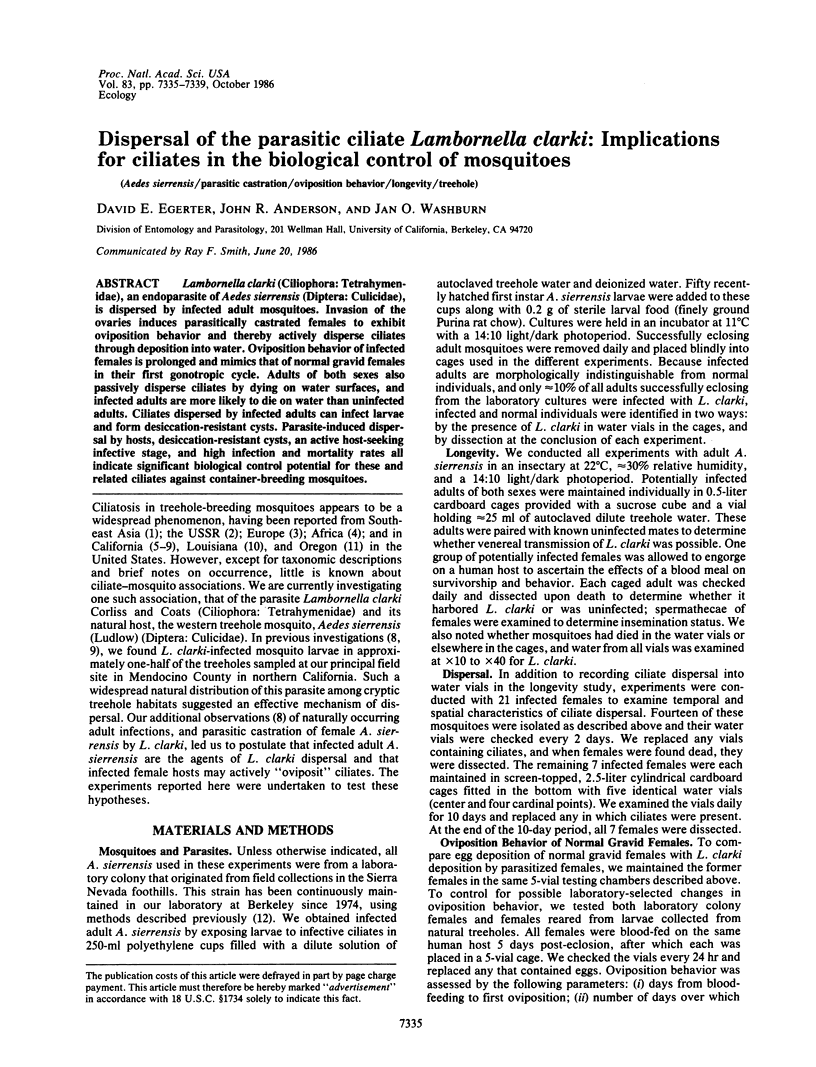
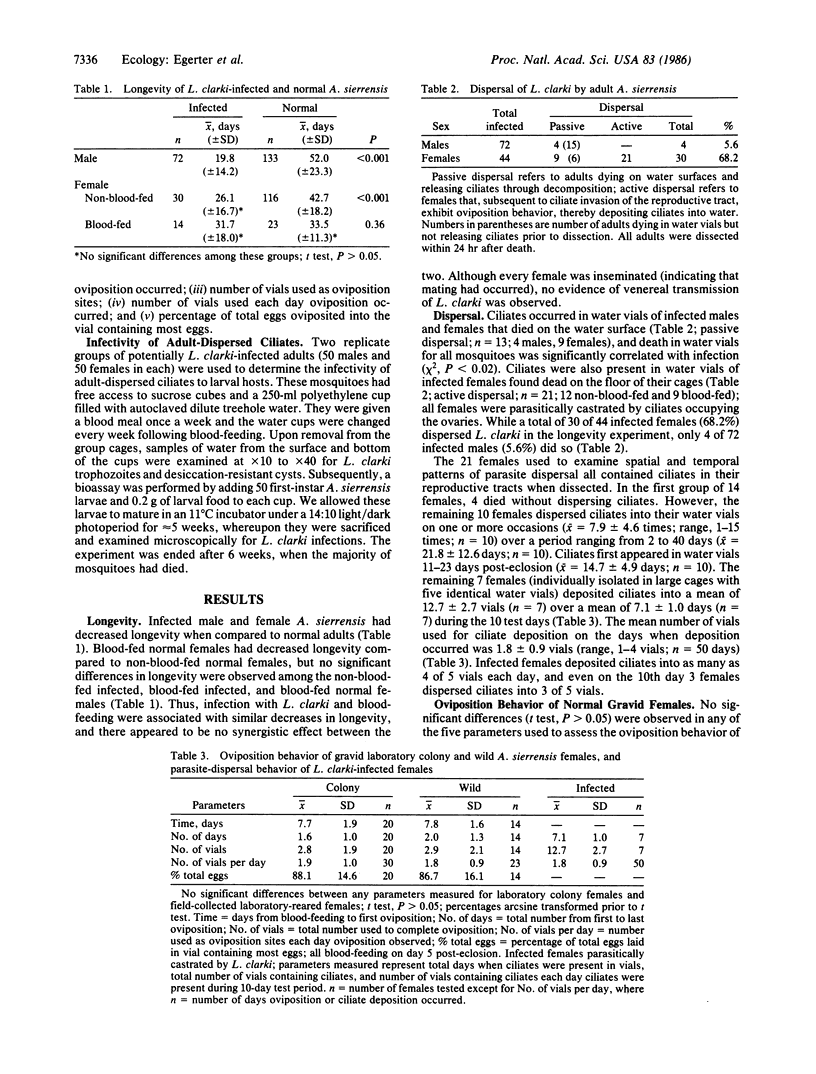
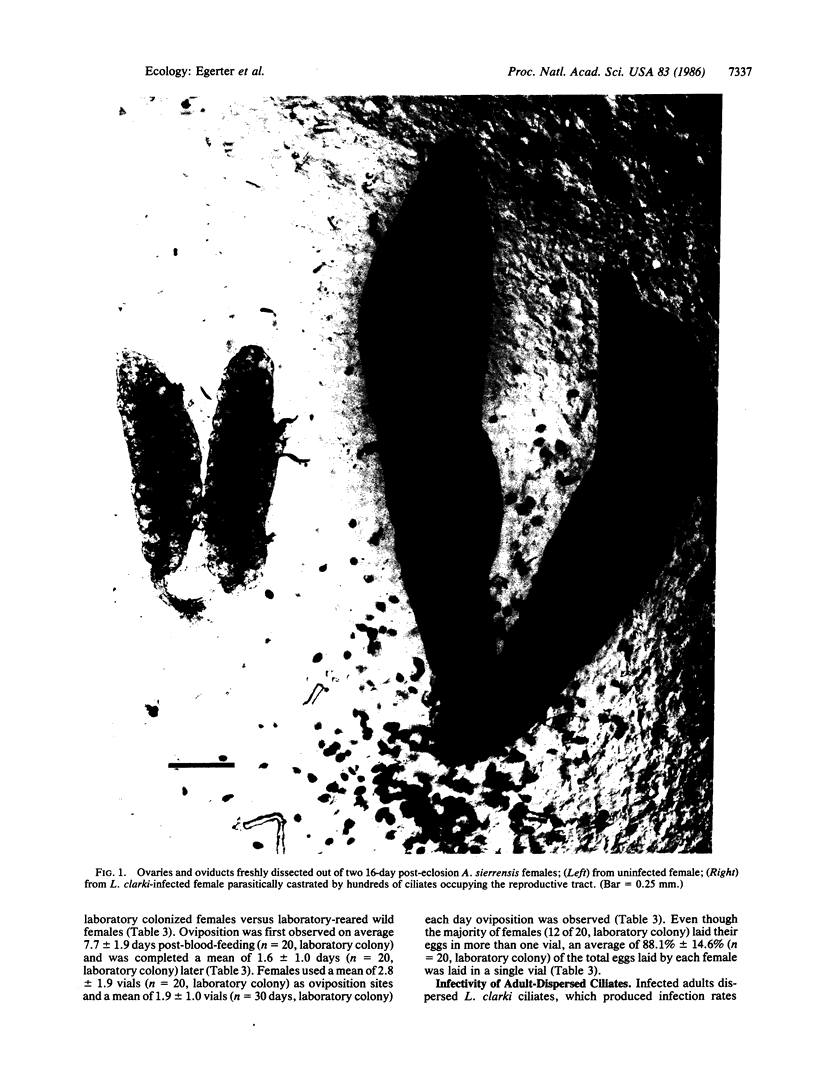
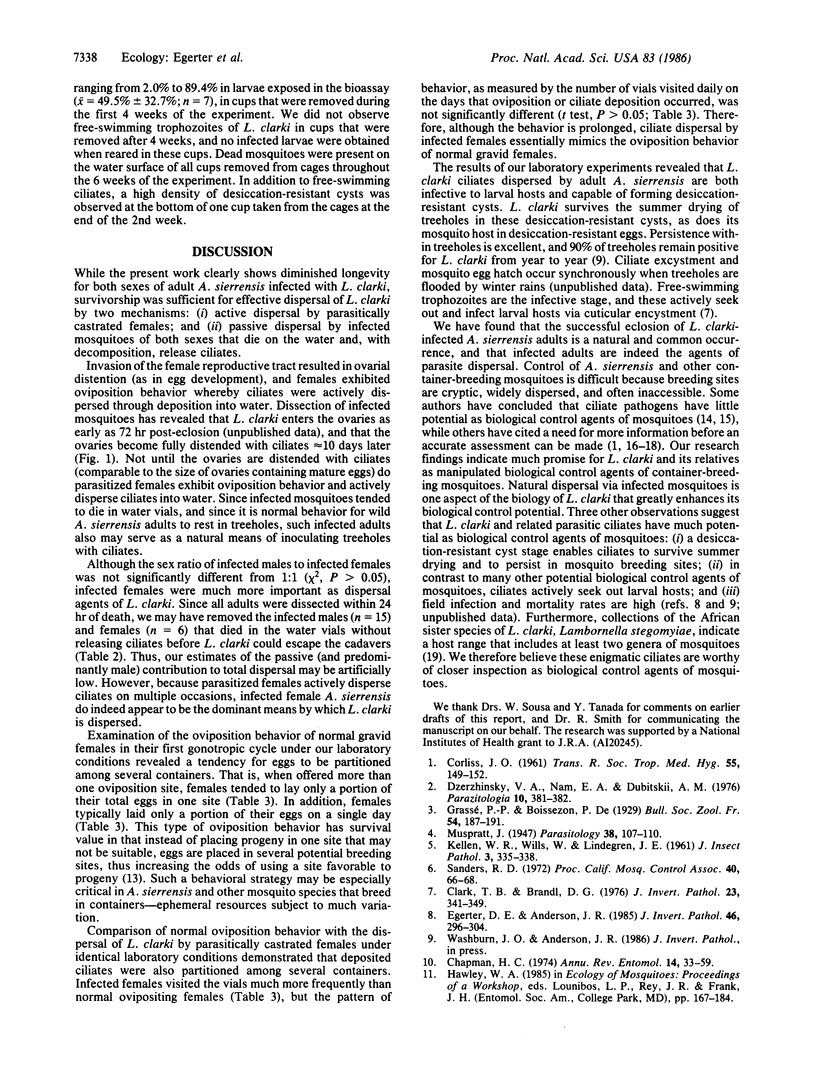
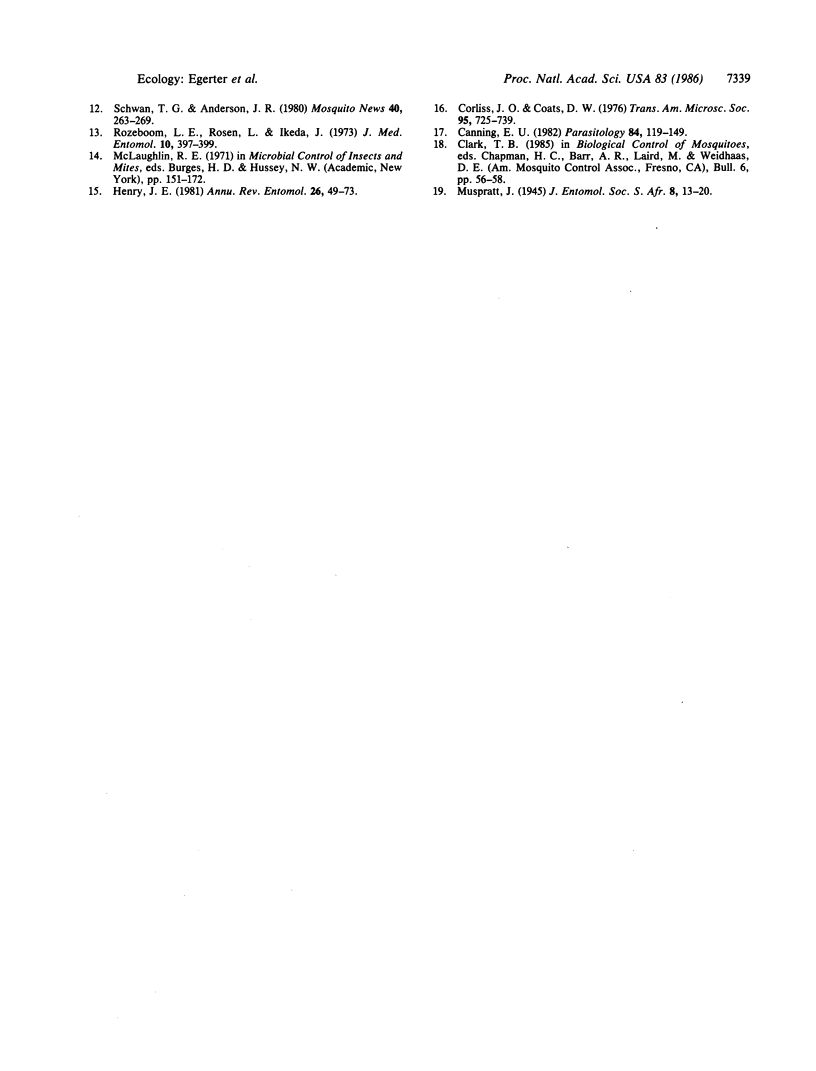
Images in this article
Selected References
These references are in PubMed. This may not be the complete list of references from this article.
- CORLISS J. O. Natural infection of tropical mosquitoes by ciliated protozoa of the genus Tetrahymena. Trans R Soc Trop Med Hyg. 1961 Mar;55:149–152. doi: 10.1016/0035-9203(61)90019-0. [DOI] [PubMed] [Google Scholar]
- Chapman H. C. Biological control of mosquito larvae. Annu Rev Entomol. 1974;19:33–59. doi: 10.1146/annurev.en.19.010174.000341. [DOI] [PubMed] [Google Scholar]
- Clark T. B., Brandl D. G. Observations on the infection of Aedes sierrensis by a tetrahymenine ciliate. J Invertebr Pathol. 1976 Nov;28(3):341–349. doi: 10.1016/0022-2011(76)90009-4. [DOI] [PubMed] [Google Scholar]
- Dzerzhinskii V. A., Nam E. A., Dubitskii A. M. Obnaruzhenie u lichinok komarov Aedes aegypti gregariny Lankesteria culicis (Ross) i infuzorii Tetrahymena stegomyiae (Keilin) Parazitologiia. 1976 Jul-Aug;10(4):381–382. [PubMed] [Google Scholar]
- Rozeboom L. E., Rosen L., Ikeda J. Observations on oviposition by Aedes (S.) albopictus Skuse and A. (S.) polynesiensis Marks in nature. J Med Entomol. 1973 Jul 31;10(4):397–399. doi: 10.1093/jmedent/10.4.397. [DOI] [PubMed] [Google Scholar]



